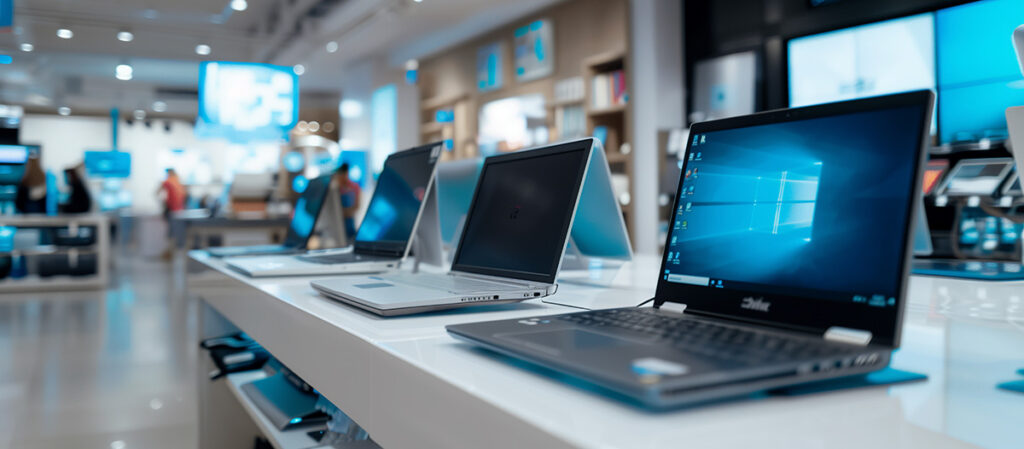By John Sikaras, Fulton May Solutions
New U.S. tariffs on Chinese technology imports are set to take effect, and businesses should be prepared for the impact. The planned tariffs will significantly increase the cost of essential IT equipment, including laptops, servers, networking hardware, and AI-powered devices. Along with price increases, companies may also experience longer lead times and potential supply chain disruptions—both of which could create challenges for IT planning and operations.
For organizations that rely on technology for daily operations and long-term growth, these changes reinforce the importance of a proactive IT strategy. With rising costs and potential supply chain disruptions on the horizon, businesses will need a strategic approach to stay ahead. Understanding the impact of these tariffs—and taking action now—can help mitigate risks and ensure continued operational efficiency.
Understanding the New Tariffs on IT Equipment
The Trump administration is set to reinstate tariffs on Chinese-made technology products, reversing previous rollbacks from 2022. This move is part of broader trade policies aimed at reducing reliance on Chinese manufacturing and increasing domestic production capacity. However, for businesses purchasing IT hardware, these tariffs will likely lead to higher costs and possible delays in acquiring new equipment.
According to CNBC, the tariffs could increase prices on:
- Laptops and desktops
- Servers and networking equipment
- AI processors and advanced chips
- Other essential IT components
Industry analysts predict that these tariffs could lead to price hikes of 10-25% or more on affected products, depending on how vendors adjust their pricing and supply chain strategies.
In addition, InformationWeek highlights that businesses may experience delays in sourcing new IT equipment, as manufacturers shift supply chains or seek alternative production options. These delays could have ripple effects across industries, especially for organizations planning IT upgrades or expansions in 2025.

What This Means for Your Business
For many companies, IT infrastructure is the backbone of their operations. Increased costs and delays in acquiring essential hardware could lead to:
Higher IT Procurement Costs
If your business plans to upgrade its IT environment in the near future, expect to pay more for new hardware. The price increases will apply not only to individual workstations but also to core infrastructure components like servers, storage devices, and networking hardware.
Longer Lead Times for IT Equipment
Supply chain disruptions could lead to longer wait times for new equipment. Businesses that wait too long to place orders may find themselves dealing with unexpected delays, potentially affecting project timelines and operational efficiency.
Increased Security and Compliance Risks
Many businesses delay hardware upgrades to cut costs. However, older equipment often lacks the latest security updates, increasing cybersecurity vulnerabilities and compliance risks. Organizations in regulated industries, such as finance and healthcare, may find themselves at greater risk of failing to meet compliance standards.
Higher IT Maintenance Costs
Holding onto outdated equipment to avoid higher purchase costs can result in increased maintenance expenses. Aging hardware is more prone to failures, leading to higher support costs and potential downtime that could disrupt business operations.

How Businesses Can Mitigate These Challenges
While these tariffs present clear challenges, businesses that plan ahead can minimize the impact. Here are key strategies to consider:
1. Upgrade Before Prices Increase Further
If your company is considering IT upgrades or infrastructure expansion, acting now can help lock in current pricing before tariffs drive costs higher. Assess your hardware needs and place orders before vendors adjust their pricing.
2. Work with a Strategic IT Partner
A knowledgeable IT partner can help you navigate pricing changes and identify cost-effective alternatives. Whether that means sourcing equipment from vendors outside China or exploring refurbished and certified pre-owned options, having expert guidance can help you make informed decisions.
3. Optimize IT Lifecycle Management
Implementing a structured IT lifecycle management plan can help businesses anticipate hardware needs and avoid last-minute, high-cost purchases. A planned refresh cycle allows for budget predictability and strategic hardware investments.
4. Consider Leasing or Hardware-as-a-Service (HaaS)
For businesses looking to spread out costs rather than making large upfront investments, leasing IT equipment or adopting a Hardware-as-a-Service (HaaS) model can provide more financial flexibility. These options ensure access to up-to-date technology without the immediate capital expenditure.
How Fulton May Solutions Can Help
At Fulton May Solutions, we specialize in IT procurement, managed IT services, and infrastructure planning. Our team can help your business:
- Assess your IT environment and determine which upgrades are critical before prices rise.
- Identify cost-effective hardware solutions, including alternative vendors and refurbished equipment.
- Implement IT lifecycle management strategies to prevent unexpected hardware costs.
- Explore leasing and HaaS options to reduce upfront expenses while keeping technology up to date.
The upcoming tariffs will impact IT budgets and planning, but businesses that take a proactive approach now can stay ahead of rising costs and avoid disruptions.
Let’s build a strategy to keep your business running smoothly. Contact Fulton May Solutions today to discuss your IT needs and create a plan before these changes take effect.





